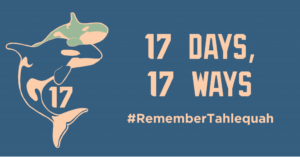How to Write a Nonprofit Blog that Engages Supporters and Motivates Action

Image by Werner Moser from Pixabay
Nonprofit Blog Writing Best Practices: Content, Structure, SEO, Growth, and Examples
Many nonprofits struggle to write blogs consistently. Reasons why this happens include a lack of time, but also an uncertain confidence that blog writing accomplishes anything. However, another reason nonprofits fail to write blogs is because they just aren’t sure how to do it.
If you want to be producing more content but aren’t sure how, use this guide for how to write a nonprofit blog.
Why Should Nonprofits Write Blogs?
Blogs are the currency of the online world. Without content, you have little to talk about in your emails, social media, or in Google Ad Grants.
You can’t just keep asking for money. The online world doesn’t work that way. You must give value away in order to get value in return. You must stay on people’s minds. Be credible. Be known. Be relevant.
Blog writing accomplishes all this. But it does much more.
It also helps you grow your email list, improve your reputation, attract new potential supporters, and keep your site from falling off the search engine radar. Dead sites tell no tales and therefore get ignored by Google and Bing.
See 7 ways blog content helps your nonprofit grow.
Breeze through this nonprofit blog-writing guide and learn how to write a nonprofit blog that provides you with a powerful and ever-growing online asset.
A good blog contains at least four critical components:
- – Engaging Content
- – Readable Structure
- – Effective SEO
- – Growth Assets
Let’s look at each of these in more detail.
The 2 Essential Qualities of Effective Blog Content for Nonprofits
There are a number of blog content ideas you can write about. Here’s a few nonprofit blog writing best practices from WordPress. A lot of great ideas there – but allow me to simplify this.
Great nonprofit blog articles really only need to do two things:
1) Be informative – answer a question people are asking
2) Relate to your mission
Sometimes, if you have news to share that people wouldn’t find out any other way, you can be their primary source of information on that topic. But the two essential traits of nearly every blog is that they should be informative and relate to your mission.
Here’s why this matters:
In the online world, for the most part, people are looking for answers. They’re thinking about things, and whether they’re searching for answers actively or passively, they will respond when presented with an answer to a question they’ve been thinking about.
Your goal is to attract people to your site who think and care about the issues related to your mission.
 For example, here’s a blog from the Washington Environmental Council about 17 ways to protect orcas in the Puget Sound.
For example, here’s a blog from the Washington Environmental Council about 17 ways to protect orcas in the Puget Sound.
For a person who cares about orcas, if they’re browsing through social media and come across a post that has an engaging headline and hopefully a picture of an orca, and that links to this article, they will probably click on it. Why? Because they care about orcas!
This isn’t complicated.
This blog answers a question – how can I help save orcas? It’s informative, as it provides 17 ways to do it. No one can do all 17, but everyone can find at least a couple they can do. And, it relates to the mission of the nonprofit. Why is that important?
Because if this reader appreciates the content they’ve just read, they’ll be curious about this organization, possibly sign up for their email list, and perhaps more.
The blog attracts the visitor, gives them something they wanted to know, and provides a way to get involved.
This is what effective content can do for your nonprofit. How will you attract new supporters online without content?
How to Structure Your Blog for Readability

Image by Ben Kerckx from Pixabay
Getting through a blog that’s hard to read is like eating spaghetti without a fork. Sure you can do it, but it’s pretty frustrating.
Online reading is all about simplicity. You are not writing a term paper, a formal journalistic article, a grant request, or worst of all, a dissertation. A lot of nonprofit staff members have degrees related to nonprofit development and fundraising. If that’s you, you will have to fight against the tendency to write at the level you had to employ in college.
Writing online is about one thing – being easy to read.
You’re not trying to impress anyone. You’re not using perfect sentence structure. You’re using contractions, repetition, and yes, pretty much everything you see me doing in this blog.
Here are the five ways to structure your blog so it’s easy to read and act on:
1) Capture attention with an opening that specifies the topic
2) Use multiple subheadings, lists, and bullets to break up content
3) Write short paragraphs. Yes, sometimes even just one sentence with a few words
4) Use informal language – nonprofit blogs are not the place for jargon and buzzwords
5) End with a Call to Action
That last item is so, so important, and yet so often overlooked by nonprofits and businesses alike.
You cannot just end the article and give your reader nothing to do. I’ll share more about this in the Growth section of this article. (Hint – that’s another blog writing tip – keep them reading by reminding them of what’s ahead).
Minimal SEO that Anyone Can Do
Yes, you can do SEO. No, not the kind you have to pay for. But there are a few basic tactics that anyone can do, and that should be done in every single blog your nonprofit writes.
Here are the four on-page SEO items you want on every blog:
1. At Least One Outbound Link
Search engines like articles that link to other websites. And readers like it too, because it shows you’re not afraid to involve other resources to help communicate to your audience. Notice how I’ve already given you several outbound links in this blog. Outbound links are just one of many checkboxes in comprehensive SEO. You can’t check all these boxes – you need a pro to do that.
But you can do this one. And if you ever hired an SEO professional and you weren’t creating outbound links, that would be one of their first recommendations.
Websites cannot be isolationists.
2. At Least One Link to Other Pages on Your Site
Just as you should have at least one outbound link, you should have at least one internal link as well. And no, linking to your donate page is not enough.
The orca blog example from earlier has TONS of outbound links, and several internal ones too. Why? Because it’s a post about ways to get involved.
Here’s a nonprofit blog example from Friends of WPC Nepal that also includes multiple outbound and internal links.
Your main content and program-related pages should connect to blogs that relate to them. If you talk about volunteers, link to your volunteer page. If you mention your founder, link to your bio or About page. This sort of site structuring behavior gets viewed favorably by search engines and site crawlers.
3. Inject a Primary Keyword in the Headline or Subtitle

Image by Wokandapix from Pixabay
Ideally, you will also include this early in the article and here and there throughout it, in some variation. If you want to show up in search engines and be relevant in Google Ad Grants, you must make it clear from the top what your article is about. This is the primary function of keywords.
Headlines need to grab attention, and sometimes, like on social media, the best way to do that is not with keywords. But in terms of SEO, without keywords, your article won’t show up when people search for that term. So your headline strategy on social media may need to be a little different from the one in your actual article.
4. Spread Keywords Organically Throughout the Page
Don’t obsess over this. It’s much more important to just write good content that’s helpful and easy to read. But you do want to make it clear to search engines that your page is indeed what the headline promises.
There’s a lot more to SEO than these four tips, but just doing these four things will elevate the quality of your content from an SEO standpoint.
If you’d like ProActive Content to give your site an SEO evaluation or basic upgrade, you can learn more about my Basic SEO services here.
Include Nonprofit Growth Assets in Every Blog Article
Finally, every great nonprofit blog must maximize its potential as an asset for your organization. As mentioned earlier, this is why you must end each blog with a call to action.
But in reality, you should include multiple calls to action, all over each article. Examples of CTAs you should include when appropriate:
- – Signup for our newsletter
- – Share this article
- – Like us on social media
- – Donate
- – Learn more about this topic
- – Watch this video
Which one of these should you use the most? The first one. Growing your email list, continually, pays lifelong dividends, and you should take every opportunity possible to get new people to join.
Nonprofit Blog Writing Best Practices Recap
Just to review, here are the four essential components to include in any blog written by your nonprofit:
- – Engaging Content
- – Readable Structure
- – Effective SEO
- – Growth Assets
If you need help producing more blogs on a consistent basis, or with ways to publicize them so more people actually see them, schedule a free 60-minute consultation.
Did You Know?
About 55% of nonprofits don’t even have a blog, let alone are using it well.
See 4 reasons why so many nonprofits fail to benefit from blog content marketing.
Want more content? Get weekly nonprofit fundraising and copywriting tips, strategies, and motivations in the ProActive Insights newsletter.


